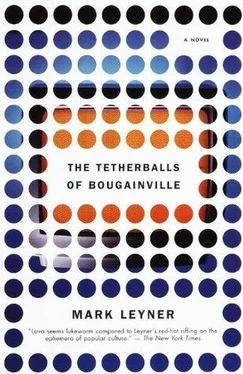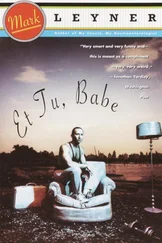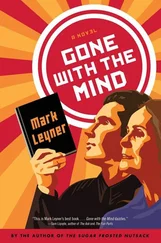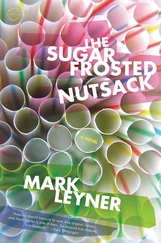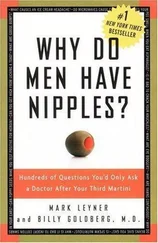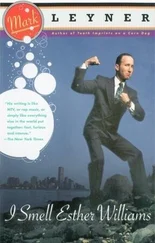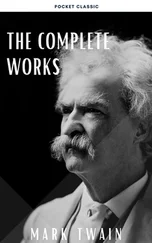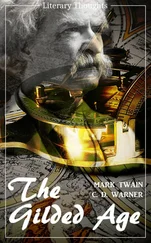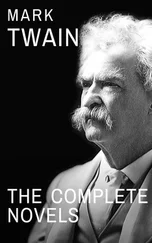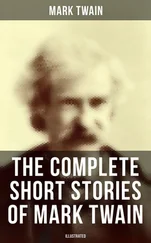I’ve done the walls in Benjamin Moore Super White and on one I’ve hung lengths of sheer muslin from a row of small hooks a few inches below the ceiling. But a white room must be anchored by something dark, or it just floats away. So that’s what motivated my large pieces. I’ve got a cherry veneer queen sleigh bed with a waffle-weave duvet cover, I’ve got a Shaker-style entertainment armoire, and I’ve updated two Directoire armchairs with ecru-and-black leaf-print cotton slipcovers. Those are the pieces that give the room what I call ballast .
Then, of course, I have a stainless steel rack of leather motorcross trousers.
And I have a steel-and-glass vitrine for my objets d’art.
WARDEN
What kind of objets d’art do you have?
MARK
I have some pretty cool stuff that my dad brought me. I have a scrimshaw engraving tool from Nantucket. I have a Ming Dynasty jade angel-dust urn, a Kangxi-period porcelain angel-dust ladle, and a 17th-century English sterling-silver and hobnail cut-glass angel-dust flacon. I have a foot-long lozenge-shaped piece of vitrified Ukrainian radioactive military waste. And I have a defused Italian Valmara-69 antipersonnel fragmentation mine and a Russian PFM-1 “butterfly” mine, which I was going to write a story about once, but never got around to — which is kind of typical of me.…
WARDEN
A story about a mine?
MARK
Uh-huh. In Mrs. Zimmer’s English class we read a story by Nathaniel Hawthorne called “The Artist of the Beautiful,” which takes place in New England in, like, the 1830s, and it’s about this guy Owen Warland who’s this wimpy genius who’s supposed to be a watchmaker but spends all his time working on this beautiful, intricate mechanical butterfly, and he’s in love with a woman by the name of Annie Hovenden who’s not really in love with him because I think she figures he’s too wimpy and quixotic and he’ll never amount to much career-wise, and she ends up marrying this stupid albeit totally buff blacksmith named Robert Danforth and they have a kid, and at the end of the story the kid accidentally crushes the mechanical butterfly.
Do you get what it means?
WARDEN
I’m not quite sure.
MARK
It’s basically about how artists are too delicate to exist in a world where the ability to earn a living and having a good body are considered, like, the most important things. So, y’know what butterfly mines are?
WARDEN
Nope.
MARK
They’re antipersonnel mines, but they’re released from helicopters and they have little wings that enable them to glide to the ground. The Soviets dropped a ton of them on Afghanistan. They explode when cumulative pressure is applied to the wings.
So I had this idea to do a remake of “The Artist of the Beautiful” where, instead of just making this exquisite mechanical butterfly, Owen Warland makes one of these PFM-1 butterfly mines, and at the end when the kid starts playing with it, his father takes it away from him and, not being the brightest guy in the world, he starts pulling on its wings and it explodes and blows his hands off, and Annie, who’s nothing if not pragmatic, realizes that Danforth’s blacksmithing days are over and she finally acknowledges that maybe Owen has a future after all — apparently as a munitions expert — and leaves her maimed husband for the Artist of the Beautiful, and they live, like, happily ever after.
See, at least in my version the reader would get some satisfaction. But since I never got around to actually writing it …
WARDEN
Do you read a lot?
MARK
Primarily books and magazines about art.
When I first started masturbating, I’d look at the photographs in some of my mother’s books, most frequently one called Our Bodies, Our Selves .
WARDEN
Were you too young to appreciate the irony of having appropriated a classic feminist reference for use as a male adolescent stroke book?
MARK
Heavens yes, I was much too young! You have to remember, this was almost two years ago.
Anyway, one day my father had a talk with me and he said since you’ve reached the age where you’re going to be spending so much time in your room masturbating, you should have books with color plate reproductions of nudes painted by the world’s greatest artists, instead of having to drool over these clinical photographs designed to teach women to love their own labia. And he was right. You can say what you want about my father’s indiscretions, but he was a very caring, enlightened parent.
WARDEN
So what were your favorite paintings?
MARK
For jerking off? At first I liked Velázquez’s Venus and Cupid , Alexandre Cabanel’s The Birth of Venus , Rubens’s The Judgment of Paris , Ingress Grande Odalisque , Manet’s Olympia …
VARIOUS ANGLES of MARK gesticulating animatedly, as he expatiates on various masterpieces ranging from the High Renaissance and Baroque eras to the pointillist and post-impressionist movements, sometimes assuming the languid poses of the nude subjects of the paintings, sometimes vividly pantomiming a painter in the throes of his work in order to better illustrate some bravura effect — a passage, perhaps, of virtuosic impasto or frankly voluptuous chiaroscuro.
Over this, we HEAR
MARK (voice-over)
I’m not sure what it was that made me feel so comfortable discussing subjects such as art and masturbation with her. Certainly the drugs and the wine had relaxed me, made me less reserved, given me an enhanced feeling of self-assurance … but also I felt that I was getting to know her so much better now as a person. At first she was just The Imperiously Voluptuous Warden. And she was obviously, like, preternaturally brilliant — I mean, she was one of the most successful women in the entire New Jersey state penal system. So it was like being in the presence of a movie star in the sense that she initially seemed so intimidating and inaccessible. And I certainly never ever thought for a second that she’d respond positively to my notes. And when she did, I was absolutely terrified. But then she seemed so genuinely interested in my sound system and in my room … and I began to find it easier and easier to talk openly with her about almost anything.
NEW ANGLE of MARK
MARK
… but then my taste started evolving beyond mimetic art, beyond the figurative and representational, beyond naturalistic renditions of nude women, actually beyond any biomorphic imagery at all. And I arrived at this revelatory and — to me — profound appreciation of pure abstraction. The very notion of an abstract painting done by a woman became a huge turn-on. And that’s when I started using paintings by Helen Frankenthaler, Joan Mitchell, Agnes Martin, Elizabeth Murray, Jennifer Bartlett, early Jo Baer, Rebecca Purdum …
WARDEN
It seems to me an unusually sophisticated autoerotic deployment of art for someone your age — eschewing woman-as-subject-matter for woman-as-generative-agent.
MARK
I think it was just an inevitable consequence of intellectual and psychosexual maturation. I was twelve, I was becoming very active onanistically, and I was reading all the classic criticism of Clement Greenberg and then people like Michael Fried, E. C. Goossen, Sandler, Alloway, Perreault, Barbara Rose, Lucy Lippard, and my entire notion of what constituted erotic visual content changed radically.
WARDEN
Are there certain paintings that you find particularly provocative?
MARK
Absolutely! There’s a Jo Baer painting, Untitled (Double Bar Diptych — Green and Red) , which is two panels with vertical black bars parallel to each side, a thin red or green line limning the inner edge, and recapitulating the shape, of each bar … There’s an Agnes Martin, Untitled #9, which is a composition of contrasting horizontal brick-red and sky-blue bands separated by much narrower bands of flat white … A fleeting glimpse of either painting gives me a frightful hard-on.
Читать дальше
